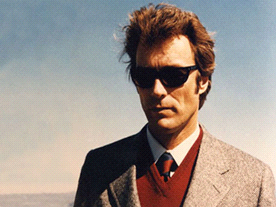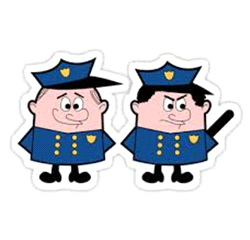I read a lot as I know you do too.
Rarely, though, do I find myself reflecting on what I’ve read long after I’ve moved on to other things. Except for recently.
Over the summer, I had the luxury of being able to read a couple of articles back to back. Each article related (unsurprisingly!) to leadership and, if read in isolation, neither would have given me much pause for thought …. It was the jarring juxtaposition between the two that did that.
One article centred around how COOs who are appointed in a ‘Bad Cop’ capacity by the CEO to do the operational ‘dirty work’ could preserve their personal reputations. The article highlighted a ‘Good Cop : Bad Cop’ collaboration between CEO and COO as being a highly successful formula for pile-driving organisational change.
The other show-cased serial entrepreneur Luke Johnson’s view of the ‘anatomy of a true Leader’. Whilst there was nothing really new in either article, what struck me was the contrast between the two.
I’ve personally had first-hand experience of all three types of Leader! ‘Good Cop : Bad Cop’ was the brutal norm when I worked in Financial Services consultancy briefly in the 1990s. Thankfully, the more rounded type of Leader has been my typical client since moving into LifeSciences consultancy over 15 years ago.
However, is there still a place in modern leadership for the ‘Bad Cop’? However hard-nosed it may be, does the end ever justify the means?
"Chief Operating Officers are the Dirty Harrys of business: when hard change is needed, they are enforcers who make sure the CEO's goals are met for the good of the business..."
Source: 'Somebody has to be the bad cop', Carly Chynoweth, Sunday Times July 2015
A necessary evil

As well as bringing the (not unwelcome) image of Clint Eastwood to mind, Ms Chynoweth explores the less welcome image of the COO as a ruthless but highly effective ‘gun for hire’: a necessary evil for organisations under pressure to drive transformational change.
You have to go in and make hard decisions, […] you have to call it as it seems, which does not necessarily endear to the whole organisation.’
John Mould , COO
A very smart strategy or simply a leadership cop-out?
With the COO taking ownership of ‘running the business’, it is argued that this enables the CEO to focus on the other important aspects of enabling a business to thrive such as thinking about the bigger picture, fund-raising and general schmoozing.
It seems this approach has its merits.
“For a number of organisations it is easier to have a good cop and a bad cop so that employees can see people in these quite simple roles.”
Richard Kwiatkowski, Cranfield School of Management
Richard Kwiatkowski acknowledges that, whilst it is quite a ‘primitive mechanism’, being able to relate to your CEO as ‘great’ and your COO as the bad guy helps people to identify more easily with the CEO’s strategy and view change more positively.
Nonetheless, this approach affronts my own leadership values at every level.
But what if there are situations where the end does justify the means? What if this is actually a very smart strategy? Is my attitude towards world-class leadership simply naïve and impractical?
I found reassurance in Mr Johnson’s article. He made clear his view that ‘outstanding leaders need the courage to make unpopular choices’ but not once did he seem to be advocating that you needed a ‘Dirty Anything’ to distance yourself from the consequences of those choices.
On the contrary, he made clear that a true Leader has the skills and empathy necessary to consistently bring people along however rough the ride and this aligns with the heart of my own philosophy.
”The ability to motivate: Orders alone are never enough. If their hearts aren’t in it, staff will simply “consent and evade”…’
Source: ‘Decisive, adaptable, funny: the anatomy of a true leader’ Luke Johnson
Tempting as it was to just dismiss this ‘Good Cop : Bad Cop’ scenario as being simply ‘bad’, I wanted to understand why I was intuitively doing exactly that.
3 reasons why ‘Good Cop:Bad Cop’ is a short-sighted cop-out:
#1: Breeds distrust
In my experience, the only way in which people can navigate the mire of ambiguity associated with change is to have complete confidence in the consistency of leadership.
However well aligned a CEO and their COO are, simply having two people at the helm creates a fault-line that can quickly create a schism.
The lack of a single epicentre of safety induces an anxiety that fuels unhealthy, distracting emotional influences.

In Patrick Lencioni’s book, The Five Dysfunctions of a Team, he places the absence of trust at the foot of his triangle.
#2: Short-term outlook with long-range impact
Those on the operational front-line need to be empowered to swift tack and retack, to make micro-decisions day in and day out - prime COO accountabilities.
Yet the ‘Bad Cop’ COO is, by definition, set up to be the organisational fall-guy to protect the CEO from the collateral damage of change. There is a built-in obsolescence in the ‘Bad Cop’ COO position when cast in this role.

So, decisions that will alter the organisation’s pathway are being made by someone who is unlikely to be emotionally invested and who may not be around long enough to see the consequence of their actions. This is one of the primary grumbles that I hear when I work with teams … Leaders who are rarely held to account for the decisions they have made because they have long since jumped ship.
#3: An Executive ‘luxury’ only
This two-handed model is simply not an option for every other person in a leadership capacity throughout the organisation. They all have to be skilled and highly effective right along the strategic/operational continuum. They do not have the luxury of being able to cherry pick what they are best at and hire a ‘right hand’ person to deal with the nitty-gritty.
As the 2-handed ‘Good Cop : Bad Cop’ model cannot be cascaded down through an organisation, it becomes the exclusive domain for the Executive few. It must then surely fall to C-suite+1 Leaders to then set the holistic leadership example for the rest of the organisation but one wonders what the implications are on the organisational culture that flows from this.
And one last thing…
Before I get jumped on from a great height by lots and lots of enraged COOs, I would like to just highlight that these musings in no way disparage those who are brilliant at managing what is undoubtedly a challenging balancing act.
However, if there are any CEOs reading this who are considering reaching out to Clint Eastwood to enquire as to his availability for a COO vacancy, I hope that the 3 bullet points above give you a little pause for thought.
As always, I’d love to know what your opinions are. Super smart strategy or simple cop out: what do you think?
This article has been written by:
Annalise Cowley, Director of Mansfield Buchanan
An experienced Consultant and certified Coach, Annalise works exclusively with LifeSciences clients worldwide to help Leaders and their teams to use insight into what people need and value to deliver the business results that matter.
MB Leadership
www.mbleadership.co.uk
Corby Enterprise Centre, Northamptonshire NN17 5EU
United Kingdom
t: +44 (0) 1536 560358
m: +44 (0) 7966 771054
ac@mansfieldbuchanan.co.uk




